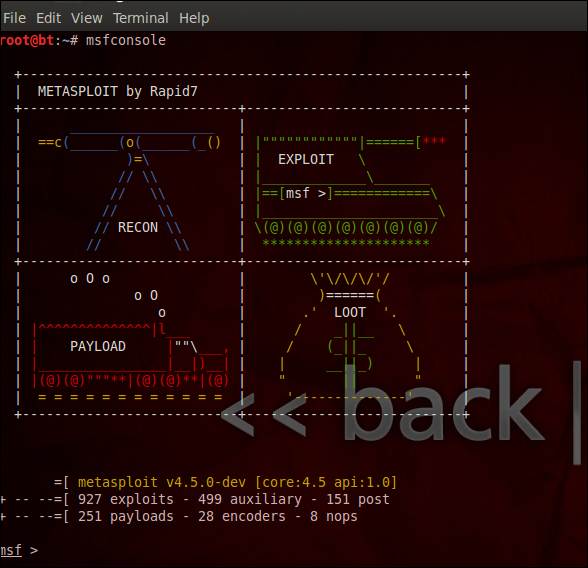Welcome to Instant Metasploit Starter. This book has been especially created to provide you with all the information that you need to get set up with Metasploit. You will learn the basics of Metasploit, get started with your first successful exploit, and discover some tips and tricks for using Metasploit. This Starter guide contains the following sections:
So, what is Metasploit explains what Metasploit actually is, what you can do with it, and why it’s so great.
Installation explains how to download and install Metasploit with minimum effort. You will also learn how to set it up in no time at all.
Quick start – your first exploitation will show you how to perform one of the core tasks of Metasploit; that is, creating your attacks and then exploiting the target. Follow the steps to exploit a target, which will be the basis of most of your work in Metasploit.
Top features you need to know about will explain how to perform five tasks with the most important features of Metasploit. By the end of this section, you will be able to exploit a vulnerable system and perform post exploitation tasks with ease.
People and places you should get to know provides you with many useful links to the project page and forums, as well as a number of helpful articles, tutorials, blogs, and the Twitter feeds of Metasploit super-contributors.
This section outlines the need for a framework such as Metasploit in a penetration tester's arsenal. But before we dive into the framework, let's understand how the framework has evolved. The following are some basic concepts that will be frequently used in this book:
- Vulnerability: In simple terms, vulnerability is a loophole in the system. It acts as a channel for an attacker to penetrate the system, which in other words is called exploitation.
- Exploit: I would recursively define this term as any working piece of code that is used to exploit a vulnerable system.
- Payload: An attacker exploits a system with a purpose. So, after a successful exploit whatever he/she intends to do with the system stands for payload. In other words, the payload is any working piece of code bundled with an exploit to aid the attacker in the post-exploitation phase.
I have defined these terms right at the beginning because these terms will be used very often throughout this book.
In the IT industry, we have various flavors of operating systems ranging from Mac, Windows, *nix platforms, and other server operating systems, which run an n number of services depending on the needs of the organization. When given a task to assess the risk factor of any organization, it becomes very tedious to run single code snippets against these systems. What if, due to some hardware failure, all these code snippets are lost? Enter Metasploit.

Metasploit is an exploit development framework started by H. D. Moore in 2003, which was later acquired by Rapid7. It is basically a tool for the development of exploits and the testing of these exploits on live targets. This framework has been completely written using Ruby, and is currently one of the largest frameworks ever written in the Ruby language. The tool houses more than 800 exploits in its repository and hundreds of payloads for each exploit. This also contains various encoders, which help us in the obfuscation of exploits to evade the antivirus and other intrusion detection systems (IDS). As we progress in this book, we shall uncover more and more features of this tool.
This tool can be used for penetration testing, risk assessment, vulnerability research, and other security developmental practices such as IDS and the intrusion prevention system (IPS).
